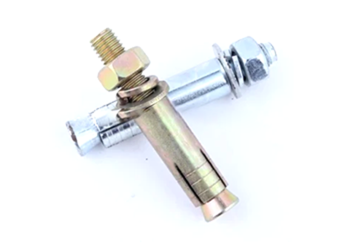Nov . 20, 2024 23:58 Back to list
wall bolts
Understanding Wall Bolts Essential Components for Structural Integrity
When it comes to construction and engineering, the devil is in the details. Among the myriad of components that contribute to a safe and stable structure, wall bolts play a crucial role in ensuring that buildings, bridges, and other infrastructures can withstand various stresses, from natural elements to human activities. This article delves into the significance of wall bolts, their types, applications, installation processes, and best practices.
What Are Wall Bolts?
Wall bolts, also known as anchor bolts or expansion bolts, are specialized fasteners used to secure structural elements to a wall, providing stability and strength to the overall construction. Typically made from steel or other high-strength materials, these bolts are designed to transfer loads between different elements of the structure, thereby enhancing its integrity. When properly installed, wall bolts help resist forces such as tension and shear, which could otherwise lead to structural failure.
Types of Wall Bolts
There are several types of wall bolts, each suited for specific applications and environments
1. Expansion Bolts These bolts expand within the hole they are installed in, gripping the material tightly. They are often used in concrete and masonry applications where a strong hold is needed.
2. Sleeve Anchors Ideal for fastening items to solid concrete, sleeve anchors function similarly to expansion bolts but include a sleeve that allows for more versatility in securing different objects.
3. Lag Shield Anchors Designed for heavy loads, these anchors work with a lag screw, expanding as it is tightened to provide a robust hold in concrete walls.
4. Tooth Anchors Used mainly in masonry, these anchors provide secure fastening due to serrated edges that bite into the material of the wall.
5. Chemical Anchors These utilize a resin or adhesive that bonds the bolt to the wall, providing exceptional hold in cases where traditional mechanical fastening may not suffice.
Applications of Wall Bolts
Wall bolts are employed across various sectors, including
wall bolts

- Residential Construction In homes, wall bolts are used to secure framing, support beams, and fixtures. - Commercial Buildings They play vital roles in anchoring equipment, signage, and even in seismic retrofitting. - Industrial Applications Heavy machinery, storage racks, and conveyor systems frequently employ wall bolts to ensure safety and stability. - Bridges and Infrastructure In civil engineering, wall bolts are indispensable in connecting structural elements, ensuring that bridges and buildings can endure environmental forces.
Installation Process
Proper installation of wall bolts is crucial for achieving the desired strength and stability. Here’s a simplified outline of the installation process
1. Site Preparation Ensure that the surface where the bolts will be installed is clean, dry, and free of any debris that could affect adhesion.
2. Drilling the Hole Using the appropriate drill bit size, create a hole in the wall material. The depth and diameter must align with the specifications of the bolt being used.
3. Inserting the Bolt Place the wall bolt into the hole. For expansion bolts, make sure the bolt's sleeve is aligned properly.
4. Tightening the Fastener Use a wrench or screwdriver to tighten the bolt. For expansion bolts, the tightening action should cause the bolt to expand and firmly grip the wall material.
5. Testing the Installation After installation, it’s advisable to test the bolt's holding capacity, especially in load-bearing applications.
Best Practices
To maximize the effectiveness of wall bolts, consider the following best practices
- Select the Right Type of Bolt Choose a wall bolt that is appropriate for the load and the material of the wall. - Follow Manufacturer Guidelines Always adhere to the manufacturer's specifications and recommendations during installation. - Regular Inspection Periodically check the bolts for signs of wear, corrosion, or loosening, especially in high-load or outdoor applications. - Ensure Proper Load Distribution Distribute weight evenly across multiple bolts when securing heavy items.
Conclusion
Wall bolts may be small components, but they are pivotal in maintaining the structural integrity of a wide range of constructions. Understanding the different types, applications, and installation procedures can significantly enhance safety and performance. By employing best practices and regularly inspecting the integrity of these bolts, builders can ensure that their structures remain safe and durable for years to come.


